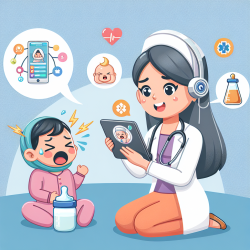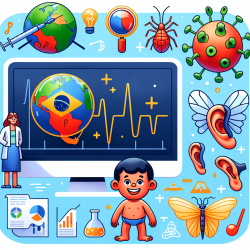Self-harm among adolescents is a growing concern in educational contexts. The study titled Narratives of Self-Harm at School: Identifying Trajectories of Intervention in Educational Contexts offers crucial insights into this phenomenon. By analyzing 96 narratives of self-harm from high school students, the study identifies key themes and gender differences that can inform targeted interventions. Here’s how practitioners can use these findings to improve their approach to managing self-harm in schools.
Key Findings
The research identified four prevalent themes organized into three sense vectors:
- Feeling the Emotions: The Pain Embodied in Female Bodies - This theme highlights how female students often express their emotional pain through self-harm, particularly cutting. The narratives reveal feelings of loneliness, inferiority, and a desire for emotional release.
- The Spaces of Destructiveness at the Look of the Other - This theme underscores the importance of physical spaces where self-harm occurs, such as bathrooms and bedrooms. These spaces often serve as both a hiding place and a cry for help.
- Couples, Families, Groups: The Relationships Which Contain - This theme focuses on the role of relationships in either exacerbating or alleviating self-harm behaviors. Supportive relationships can act as a buffer against self-harm, while strained relationships can contribute to it.
- Self-Harm as a Test of Strength of the Masculine - Male students often frame self-harm as a test of physical endurance, distancing themselves from the emotional aspects of their behavior.
Practical Applications
Based on these findings, here are some practical steps that school practitioners can take:
- Develop Gender-Sensitive Interventions - Recognize that boys and girls may have different motivations and expressions of self-harm. Tailor interventions to address these differences effectively.
- Create Safe Spaces - Establish safe, private areas within the school where students can go when they feel the urge to self-harm. Ensure these spaces are monitored by trained staff who can provide immediate support.
- Strengthen Relationships - Encourage the development of supportive relationships among students, teachers, and parents. Peer support programs and family counseling can be beneficial.
- Focus on Emotional Regulation - Implement programs that teach emotional regulation skills. Techniques such as mindfulness, cognitive-behavioral strategies, and expressive arts can help students manage their emotions more effectively.
Encouraging Further Research
While this study provides valuable insights, it also highlights the need for ongoing research. Practitioners are encouraged to engage in or support further studies to better understand the complexities of self-harm and develop more effective interventions.
To read the original research paper, please follow this link: Narratives of Self-Harm at School: Identifying Trajectories of Intervention in Educational Contexts.










